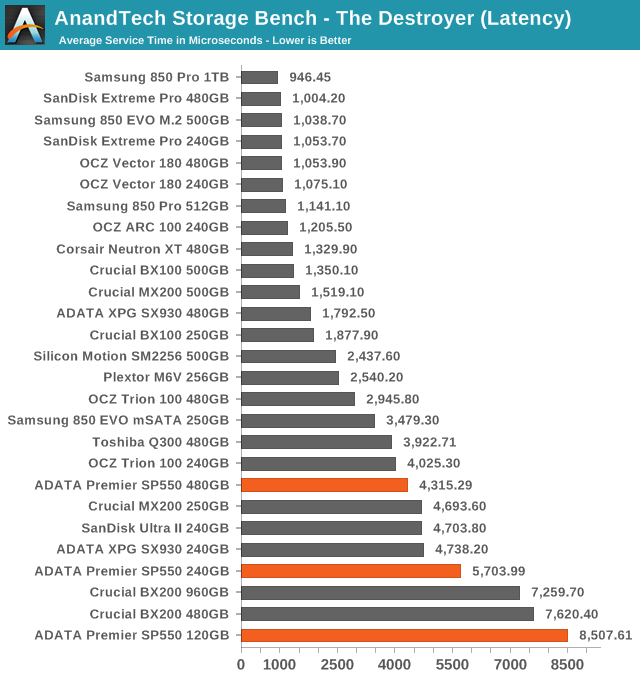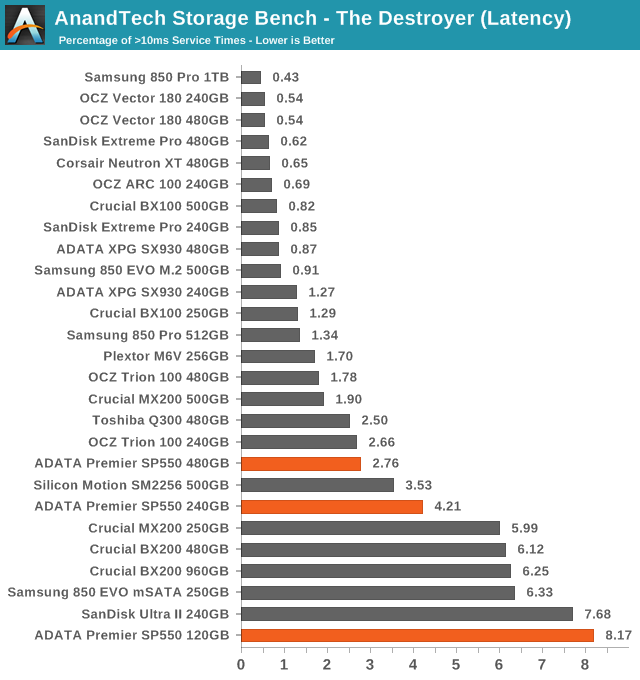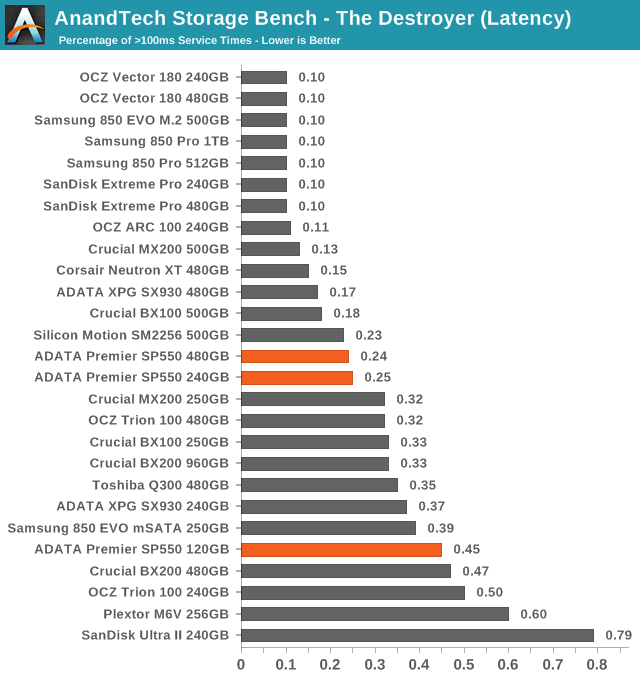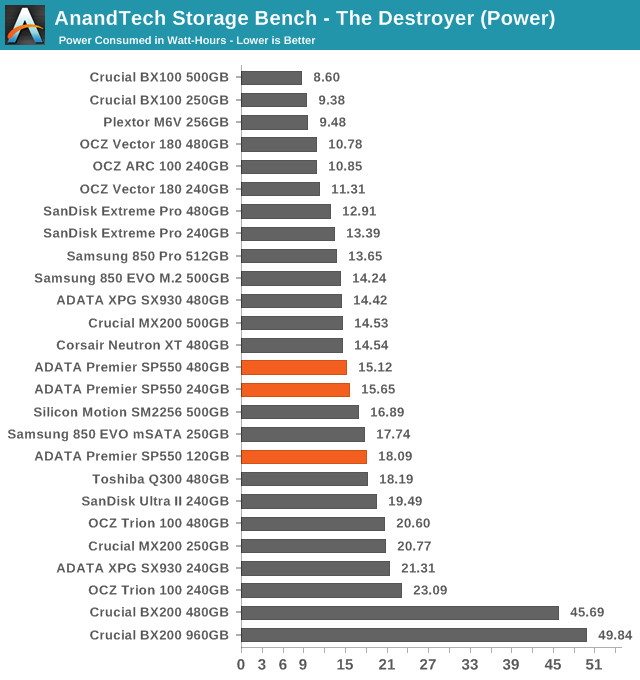The ADATA Premier SP550 SSD Review: A Second Look At Silicon Motion's SM2256 Controller
by Billy Tallis on March 23, 2016 8:30 AM ESTAnandTech Storage Bench - The Destroyer
The Destroyer is an extremely long test replicating the access patterns of very IO-intensive desktop usage. A detailed breakdown can be found in this article. Like real-world usage and unlike our Iometer tests, the drives do get the occasional break that allows for some background garbage collection and flushing caches, but those idle times are limited to 25ms so that it doesn't take all week to run the test.
We quantify performance on this test by reporting the drive's average data throughput, a few data points about its latency, and the total energy used by the drive over the course of the test.

The average data rates sustained by the SP550 on The Destroyer are pretty good by budget drive standards. It's generally performing on par with other TLC drives of twice the capacity.

The latency situation for the SP550 is not good. Each model has a higher average service time than any other drive of equal capacity, except for the Crucial BX200, with the two smaller drives reaching values close to HDD rotational latency. While the Phison-based drives have lower average data rates, they are better at keeping the latency under control.


The frequency of moderate latency outliers is a bit higher for the SP550 than the competition, but it does a decent job of preventing the most extreme outliers that would not pass unnoticed by a user.

The BX200 posted an incredibly bad energy usage score but the SP550 completely turns that around and is the most energy-efficient drive with planar TLC NAND. Most MLC drives still score better due to completing the test in a shorter time span, but the SP550 is bridging that gap.










25 Comments
View All Comments
Kristian Vättö - Sunday, March 27, 2016 - link
It takes about 25 to 30 minutes. The software doesn't try to playback the trace as fast as possible because that would result in unrealistic queue depths. All QDs are the same as in the trace, but idle times are truncated to 25µs to speed up the test.bogdan_kr - Friday, April 1, 2016 - link
Thank you, sir! It's good to know this.eek2121 - Saturday, March 26, 2016 - link
Just bought the 960 gb version of this drive to use for my Steam folder. A lot of people are bitching about TLC in this forum, but I've had 0 issues with my 840 EVO that I ordered 3 years ago.adam261222 - Thursday, June 23, 2016 - link
That moment you get 2 put them in raid 0 but you get speeds of 480MB/s read... Can you think of any fixes or reasons for why this is happening?Derrick Lo - Friday, July 1, 2016 - link
So far, I've been using the Adata Premier SP550 SSD (240GB) for about 4 months (since Mar-2016), and things are good: My laptop bootup speed is up by about 3 times, to under 30 seconds! Worth the upgrade from HDD to SSD!Only thing was the need to use a disk imaging software to copy the laptop OS & setup from the old HDD to the new SSD.